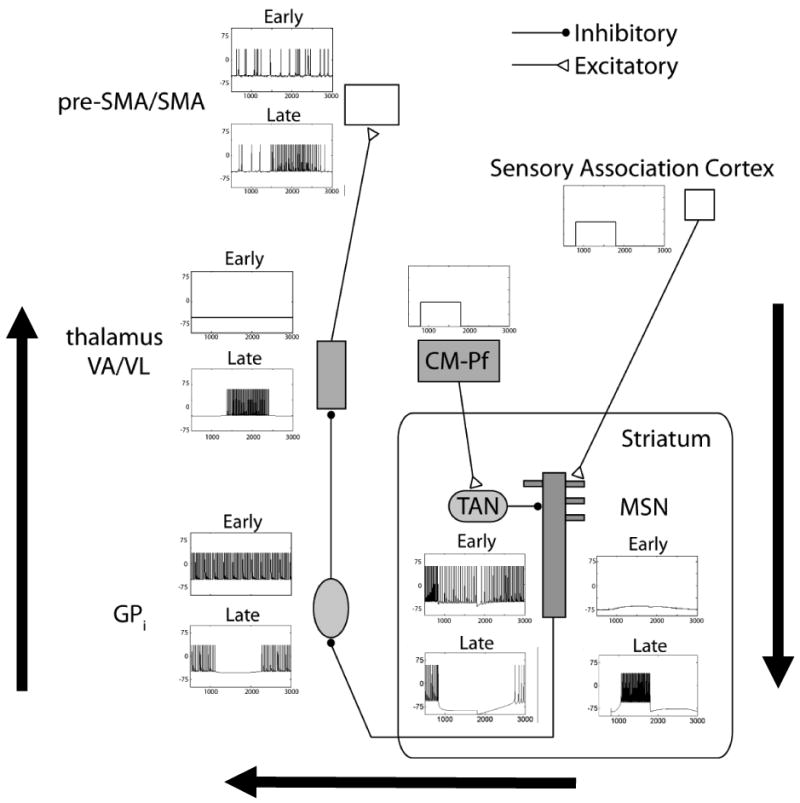Figure 5.

The neural architecture of the Ashby and Crossley (2010) model in a task with one response alternative. The thick black arrows represent the information flow. Also shown are activations from trials early and late in training, i.e., before and after the TAN has learned that the environment is rewarding. Initially the stimulus does not cause the TAN to pause, and therefore the MSN does not fire to stimulus presentation. As a result, the firing rate of the premotor unit (pre-SMA/SMA) does not change after stimulus onset. After training, the TAN pauses to the stimulus, which releases the MSN from its tonic inhibition. This allows the MSN to fire to the stimulus, which causes the firing rate in pre-SMA/SMA to increase above baseline (SMA = supplementary motor area, VA = ventral anterior nucleus of the thalamus, VL = ventral lateral nucleus of the thalamus, CM-Pf = centremedian and parafascicular nuclei of the thalamus, GPi = internal segment of the globus pallidus, MSN = medium spiny neuron, TAN = tonically active neuron).
